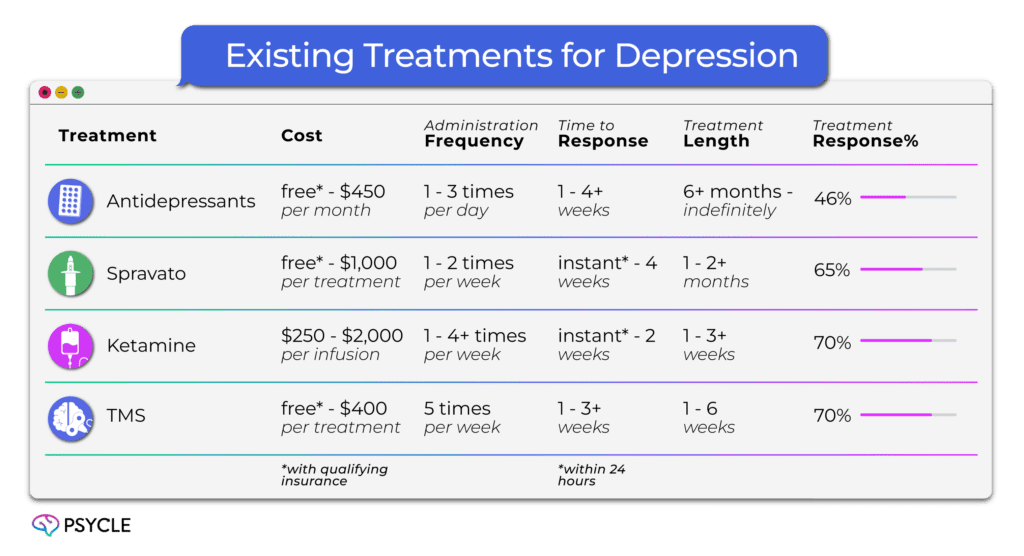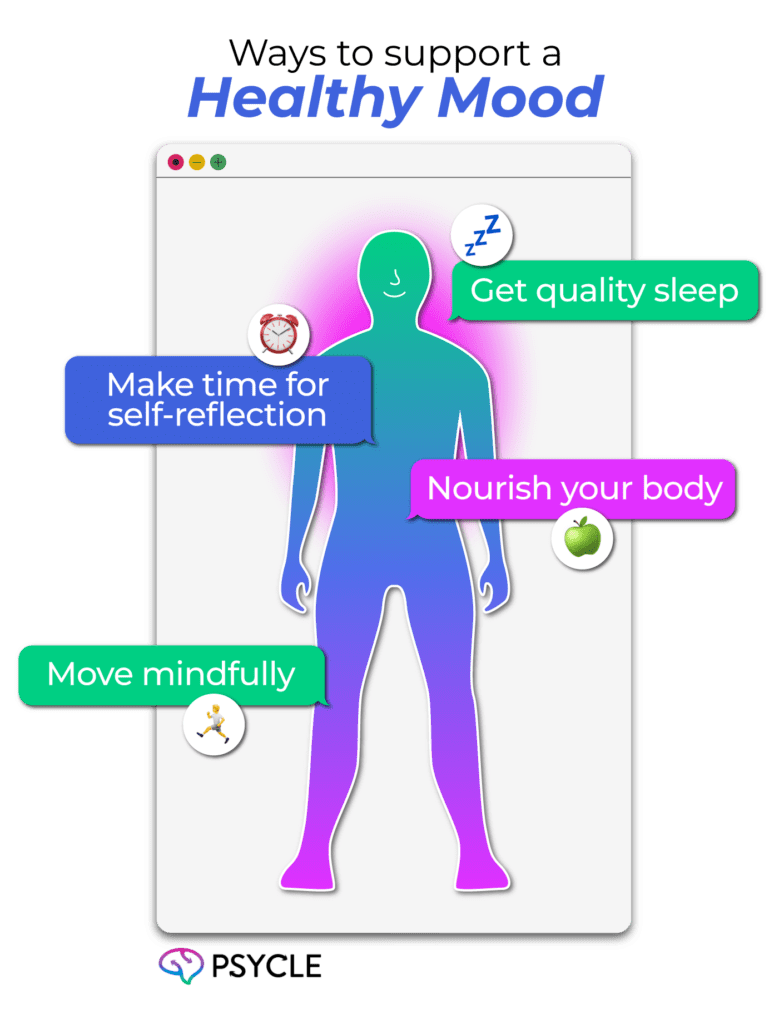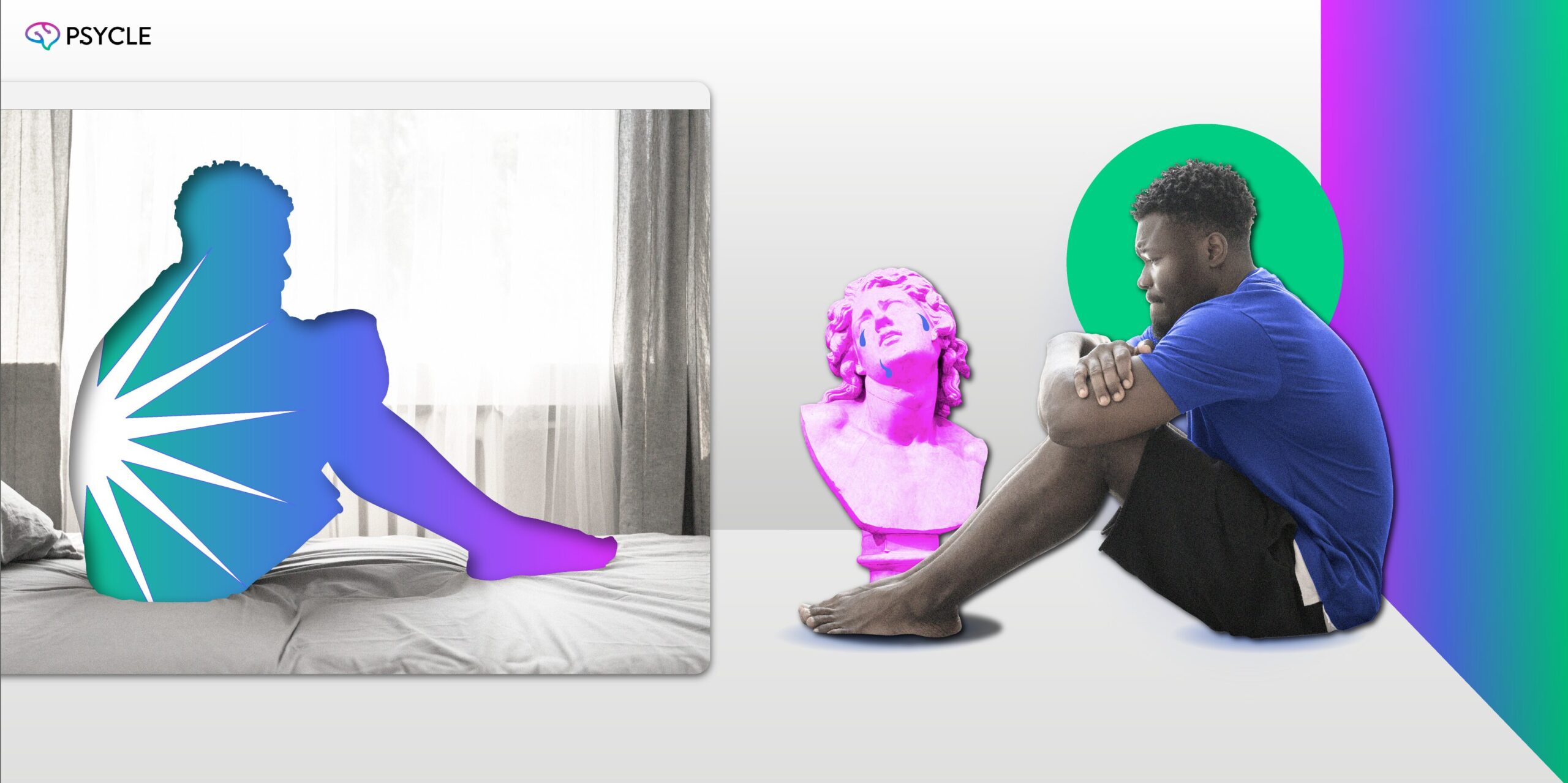In the U.S., about 7% of adults have at least one major depressive episode annually. About half of these people receive medication. The problem is that depression is a complicated condition, and what works for some people may not work for others. Some people may respond to antidepressants, while about a third of folks may have to cycle through different medications and dosages until they find something that works for them — if at all.
If you’ve been diagnosed with depression and tried therapy and medication but feel they just aren’t helping, you may be dealing with treatment-resistant depression (TRD). If that’s the case, there are alternative forms of treatment you can try. While it’s important to stay in communication with your healthcare provider every step of the way.
Let’s review a few alternative treatment options to consider and what the research tells us about how they work.
What is Treatment-Resistant Depression?
Failing to respond to depression treatment is more common than you might think. About 30% of people diagnosed with major depressive disorder (MDD) have treatment-resistant depression (TRD), characterized by persistent depressive symptoms despite multiple treatment attempts.
TRD can be frustrating, especially if you’ve been dealing with depression for a while. Depression treatment varies from person to person, and there can be several reasons why medication isn’t helping, such as the severity of the condition, your genetic makeup and family history, your social situation as well as any comorbid illnesses.
That’s why it’s important to keep your providers up to date on your efforts—they may decide to change your dose, switch medications, or add another treatment (such as therapy or a second medication) to your care plan.
What You Should Know About Alternative Forms of Therapy
Generally, you should stick with your prescribed treatment for six to eight weeks before it’s considered ineffective, although your doctor may change your treatment plan sooner if deemed necessary. Medication and talk therapy are the most common ways to treat depression, but they’re not your only options.
Other, more extensively studied types of therapy for TRD include transcranial magnetic stimulation, ketamine therapy, and Spravato (esketamine). Here’s what you should know about these treatments.
Transcranial Magnetic Stimulation (TMS)
TMS therapy is a noninvasive (surgery and medication-free) treatment that applies a series of short magnetic pulses to stimulate specific brain regions and ease depressive symptoms. It’s safe, FDA-approved, and has minimal side effects.
How Does TMS Work?
TMS therapy begins with an initial evaluation with a healthcare provider. Your doctor will talk about the process and how to prepare for treatment. TMS is an outpatient procedure, which means you’ll go home same-day.
TMS involves the use of a specially designed electromagnetic device. The machine’s magnetic pulses induce small electric currents that change the firing patterns of neurons, which “resets” specific areas of the brain that regulate your mood. The sensation feels like a tapping on your scalp.
A typical course of treatment involves daily TMS sessions over four to six weeks. People typically feel better after 10 to 15 sessions.
@makingitez Transcranial, magnetic stimulation, or TMS is a really great way to treat depression. Most people get this confused with ECT or electric compulsive therapy, these are two completely different treatments. TMS is one of the best treatments for depression as it’s 70% successful. #tmstherapy #tms #mentalhealth #depressionanxiety #BrainScience ♬ original sound – Making it EZ
Is TMS Effective for Treatment-Resistant Depression?
TMS has been shown to be at least twice as effective as standard treatments for TRD. Patients typically feel relief from their symptoms anywhere from six months to several years. In a review examining the efficacy of TMS for MDD, patients receiving TMS were more than five times as likely to achieve remission from depression than those receiving a placebo.
Is TMS Covered by Insurance?
TMS therapy is FDA-approved for the treatment of depression and obsessive-compulsive disorders, and it is covered by insurance if it’s deemed a medically necessary form of treatment.
Ketamine Infusions
Ketamine is a dissociative anesthetic, which means that it makes people feel detached from their body and environment in doses used for pain and sedation. It has a long history as a surgical anesthetic and analgesic (pain relief) medication that’s used for adults, children, and animals.
As an off-label use, ketamine has been consistently proven over more than 20 years of peer reviewed research to help treatment-resistant conditions like depression and alleviate suicidal ideations. Ketamine works quickly, which is one of the reasons it’s so sought after as a mental health treatment: while other treatment options can take weeks to take effect, many patients can feel ketamine’s effects within an hour.
How Does Ketamine Work?
Ketamine works in two important ways in patients with TRD. It has unique effects on the neurotransmitter glutamate, which is a major messenger throughout your central nervous system. It primarily works by allowing glutamate levels to temporarily increase in your brain, which may have downstream effects that contribute to ketamine’s antidepressant effects.
Ketamine also works on chemicals in your brain called BDNF and VEGF. These chemicals increase connections between neurons. It is theorized that these “growth factors” allow your brain to create new pathways for managing things like your emotions and mood.
Ketamine therapy generally takes place at an outpatient facility and is available in several forms, including intravenous (IV) infusion, intramuscular injection, sublingual (under the tongue) liquid, and lozenges. Nobody loves needles, but IV injections have been shown to have the most rapid effects on mood disorders.
Treatment begins with an initial evaluation to set expectations and help you prepare for your session. Ketamine infusion therapy generally involves a series of six infusions over several weeks, depending on your response, your provider may adjust your treatment plan in consultation with your psychiatrist or primary care provider. During your session, you’ll feel relaxed, detached, and calm.
Ketamine is generally considered safe: in 2019, National Institutes of Health researchers found that a low-dose ketamine infusion had minimal side effects among patients with TRD.
Is Ketamine Effective for Treatment-Resistant Depression?
Evidence suggests that ketamine is a promising treatment option for TRD. In 2014, researchers found that ketamine’s dissociative side effects predicted a more robust and sustained antidepressant response among 108 participants. Separate studies have also found that ketamine effectively reduces suicidality among people with TRD and significantly improves depressive symptoms within hours after administration.
Is Ketamine Covered by Insurance?
Health insurance generally doesn’t cover ketamine therapy because it’s not FDA-approved for the treatment of mood disorders, so patients generally have to pay out-of-pocket.
Spravato (Esketamine)
Nasal spray targeting NMDA receptors to rapidly relieve severe depression.
@makingitez 🌬️ Sparvato: Ketamine Reimagined! 🌬️ Imagine all the benefits of ketamine therapy in a simple nasal spray – no more needles, no more fuss! 💧 Sparvato brings relief, hope, and tranquility to your life with a gentle mist. 💡 Why Sparvato? 💡 🌈 Fast-acting: Experience a sense of calm and clarity in record time! 💪 Powerful: Sparvato tackles treatment-resistant depression like a champ! 💕 Convenient: No more daunting clinic visits – Sparvato can be administered at home! 🌐 FDA-Approved: Trust in the science-backed solution for your mental wellness! Let's face it, mental health matters, and Sparvato gets it! 🧠 Unlock a brighter future with this groundbreaking therapy that's easy, effective, and accessible.#spravato #psychedelictok #ketaminetherapy #education #mentalhealth #depressionanxiety ♬ original sound – Making it EZ
Spravato is the brand name for esketamine, a derivative of ketamine. In 2019, the FDA approved Spravato for the treatment of TRD and suicidal ideation when combined with an oral antidepressant.
How Does Spravato (Esketamine) Work?
Spravato is a nasal spray that targets specific landing pads in your brain called NMDA receptors. Like ketamine, esketamine allows glutamate to temporarily increase in the brain. Ketamine’s antidepressant effects may stem from the way it impacts other chemical messengers and pathways in the brain. In contrast, esketamine’s effects are primarily focused on those NMDA receptors and glutamate.
During a dosing session, patients administer the nasal spray themselves under a licensed provider’s supervision. Spravato contains 28 milligrams of esketamine, and the patient uses two to three devices per treatment. Esketamine’s effects peak after about 40 minutes, and sessions take about two hours from start to finish. Treatment usually lasts for eight weeks, one to two times per week.
Esketamine is generally considered safe. Potential side effects include headache, dizziness, and dissociation.
Is Spravato (Esketamine) Effective for Treatment-Resistant Depression?
Studies have shown that esketamine can improve depressive symptoms and help maintain these improvements long term. One 2023 study focusing on esketamine’s effects in patients with TRD found that almost half of patients were in remission after one year of treatment.
Is Spravato (Esketamine) Covered by Insurance?
Unlike ketamine, Spravato is more commonly covered by insurance because it’s FDA-approved for TRD when combined with an oral antidepressant. Talk to your doctor if you’re interested in learning more about Spravato.


Additional Lifestyle Options
Medication and therapy are life-saving interventions that can help people manage and recover from depression. However, it’s also worth considering your lifestyle as part of your overall care plan and complementing your treatment with habits and practices that support your health.
- Get quality sleep: Are you getting seven to nine hours of sleep per night? Sleep and mood are interconnected. If you’re having trouble falling asleep, try going to bed around the same time every night, shutting off screens an hour or so before bed, and using calming techniques to wind down, like breathing exercises or listening to a guided meditation.
- Nourish your body: While there isn’t a specific “anti-depression diet,” healthy dietary patterns have been shown to support a healthy mood. “Healthy dietary patterns” means nutrient-dense foods: lots of vegetables and fruits, a good amount of whole grains, seeds and nuts, and lean sources of protein.
- Move mindfully: Exercise is an effective treatment for mild to moderate depression, but you don’t have to spend hours at the gym daily. Aim to incorporate movement throughout your day, like going for a walk after your meals or practicing a few simple yoga poses.
- Make time for self-reflection: Mindfulness refers to the process of bringing your attention to the present moment. These practices are associated with beneficial effects on well-being, in part because they help shift negative thought patterns and promote relaxation. You can practice mindfulness through practices such as meditation, journaling, and breathing exercises.


You don’t have to make these changes all at once. Start small, picking one habit you can sustain long-term, and build from there.
Frequently Asked Questions
Is There a Recommended Duration for Sticking With a Particular Treatment Before Trying Another Option?
You should stick with your prescribed treatment for six to eight weeks before trying something new. Stay in communication with your doctor before you try any new treatments.
Should I Stop My Medication so I Can Pursue Alternative Treatment?
Patients are typically encouraged to continue their medications while they pursue alternative treatment. Your doctor can adjust medication during the course of treatment if needed. You should never abruptly stop taking oral medication without consulting your doctor.

